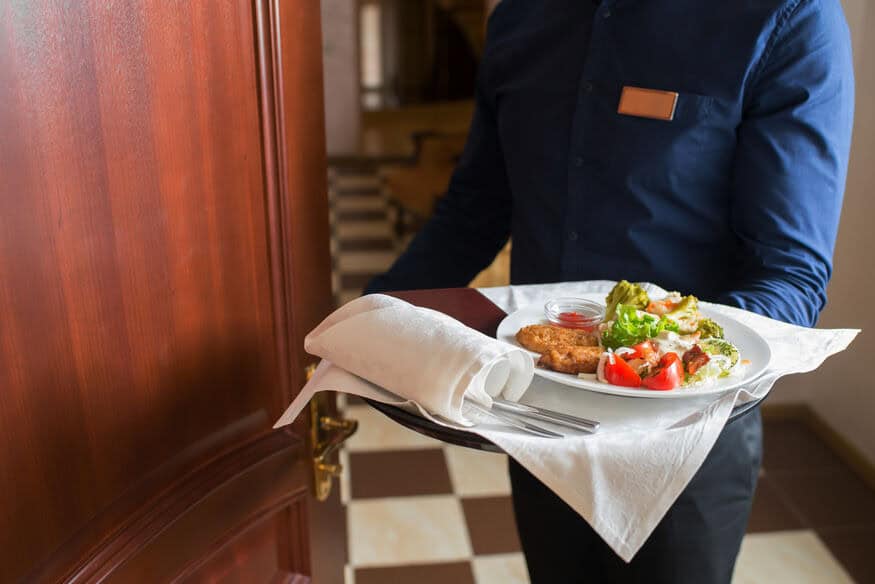The hospitality and food service industry trends have changed, and hotel kitchens are not immune.
In most economies, people want a memorable dining experience, which means your hotel dining has to be professional enough to provide customer satisfaction and interesting enough to meet customer demands. You must provide a reason for people to spend their hard-earned money at your hotel restaurant. To avoid becoming obsolete and boring, everything in your Kitchen, from layout and design to your dessert menu, needs careful planning. Here are the hot new restaurant industry trends hotel owners should consider when setting up their hotel kitchen.
Hotel Restaurant Kitchen Design Trends
As a hotel owner, do you consider hotel dining an essential consideration for business? Many travelers may not immediately think hotel kitchens are an important hotel feature. Most hotel guests might consider a continental breakfast a perk, especially when traveling with family or young kids. But what about room service, an in-house restaurant and bar, and attracting year-round patrons when hotel room occupancy is low?
All of these aspects are important considerations for hotel kitchen design. An excellent hotel kitchen design incorporates speed, efficiency, and minimal waste, all while producing delicious food that restaurant patrons and hotel guests will rave about. You can compare labor and food costs when making trend-based restaurant changes to determine if the adaptions will benefit you.
1. Kitchen Design and Menu Concept Considerations

It may sound unconnected, but your menu concept is essential to your hotel kitchen design. For example, If you use local farmers or farm-to-table, you’ll need to maximize refrigerator space and not need a huge freezer. The equipment and stations in your kitchen should be tailored to your menu concept and laid out for smooth workflow.
2. Ergonomic Design
Restaurant workers spend a lot of time on their feet. Ergonomic kitchens are designed to keep hotel kitchen staff comfortable and boost efficiency while they are working. The goal of ergonomic kitchen design is to minimize bending, hunching over, reaching, crouching, or walking around the Kitchen to find items.
Ergonomic considerations include comfortable counter heights and conveniently placed appliances and storage. For example, small refrigerators might be under counter stations, so when a customer orders salmon, the fish station cook would not have to go to the walk-in. Instead, all the fish they need for the evening would be within easy reach. Ergonomic hotel kitchen layout results in fewer people rushing around the Kitchen for ingredients and reduced physical demands on the kitchen staff.
3. Pickup Options
Customer preferences still include avoiding crowded dining rooms, but they may not want the limited room service menu, either. Today, a pickup station for food to go is the perfect compromise solution and a hot hotel kitchen trend. Pickup options are a great way for hotel guests to enjoy a meal in their rooms or for non-resident patrons to enjoy your menu at home.
4. Restaurant Technology Trends
Restaurant staffing is a significant concern; most kitchens feel the pinch. The National Restaurant Association (NRA) reported that “62% of operators say their restaurant does not have enough employees to support its existing customer demand.”
As a result, many restaurants have turned to technology to accomplish some of the repetitive work formerly done by humans. Today, you may find an AI Chatbot (artificial intelligence) taking your reservation, algorithms determining menu changes, robots flipping burgers, making salads, and delivering room service orders.
5. Greening Up Your Kitchen
Consumer sentiment is clear about environmental issues. Customers want to do business with companies that care about social issues, which means adopting new sustainable restaurant trends.
Single-use packaging and disposable items with no real purpose are out. Restaurants are notorious sources of single-use products—straws, foam or plastic cups and lids, plastic utensils. Hotel restaurants are uniquely positioned to eliminate all single-use packaging and please customers simultaneously. Even in-house takeout can be served with real cutlery and glasses on real plates. If you absolutely must use single-use packaging, choose biodegradable paper whenever possible.
All food service industries, from local coffee shops to national steakhouses, can meet customer demands and increase profit margins by eliminating food waste.
Menu Design Trends for Hotel Kitchens
When you’re working out your hotel restaurant kitchen design, the menu concept is a major consideration. You can add exciting new menu items guaranteed to tickle tastebuds or hire award-winning chefs that make your hotel dining extra-special. Here are a few of the best food trends in hotel kitchens and beyond.
1. Fresh, Local, Clean, and Green

Farm-to-table isn’t a new trend, but it is gaining popularity, especially after the pandemic. Increasingly health-conscious consumers demanding clean, organic, locally sourced foods ensure this hotel kitchen trend will likely continue to grow.
2. Detox Vacations
Healthy getaways are an emerging travel trend. An increasing number of vacationers are seeking “detox vacations” where they can unplug, relax, and eat healthily. Consumers staying for this reason will expect hotel kitchens to supply healthy eating options. Add hotel spa amenities and local package deals, and you will have a recipe for success.
The desire for healthier lifestyles will also influence bar food trends. Bar patrons are looking for flavorful, non-alcoholic choices on the menu besides the usual drink choices.
3. Sustainable Practices
In general, consumers are more sensitive to environmental concerns. Sustainable hotels boast green spaces, eco-friendly construction, minimized water use, energy-saving appliances and lighting, and sensible waste management. When a hotel kitchen is built for sustainability, it will support farm-to-table practices and may even include a fresh vegetable and herb garden on site.
4. Special Diet Menus
In their growing quest to get healthy, people are embracing specific diets. Popular diets include keto, paleo, gluten-free, vegetarian, vegan, and Mediterranean. Many hotel kitchen trends capitalize on changing diet preferences. Some diets have overlapping features, so creating full menus for each style is unnecessary. Label menu items where appropriate and offer a variety of choices.
Plants are the rising superstars of any menu. Restaurants located everywhere, from tiny hotels to pricey resort hotels, are adding new (and sometimes surprising) plant-based options to their menus. Plant-based foods are in the spotlight, from chickpea pasta and ice cream to meatless meat products.
5. Vegetable Extravaganza!

Adding a variety of vegetable dishes to your menu makes sense from every perspective. Vegetables are part of all but the most extreme diets and the easiest and cheapest food items to source locally. The staffing shortage and rising food costs make it harder to cut restaurant costs. Loading plates with affordable, delicious vegetables can help keep diners happy and restaurant expenses lower.
6. Comfort Foods
Grandma’s Sunday Supper is back on the table. The stay-at-home requirements during the pandemic inspired some new cooking skills, and a lot of people turned to old-fashioned comfort foods. The International Food Council reports that nostalgia is trending, with more folks looking for meatloaf, fried chicken, and other homey classics. Be sure to take advantage of this trend by including a few comfort food options or weekly specials.
What hotel kitchen trends will you embrace? Even if your concept is based on a specific cuisine, you should be able to incorporate locally sourced foods and healthy choices. Don’t forget to include healthy options on your children’s menus as well. Check out Food and Wine’s 15 Best Hotels for Food in the US for kitchen trends and inspirations.